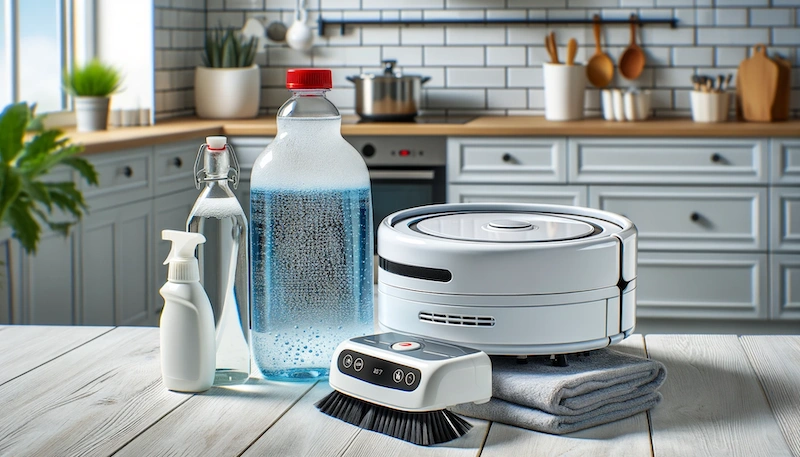Disclosure: Some of the links on this website are affiliate links. It's possible for me to receive a commission at no extra cost to you.
To prevent the growth of bacteria and the development of odors, it’s vital to empty the dirty water tank after each use. Allowing water to stagnate in the tank creates an ideal environment for bacteria, leading to worse smells over time.
Here are some factual tips and methods to help neutralize those unwanted smells.
Using Soap and Water to Remove the Dirty Water Tank Smell
A popular method involves adding a splash of mild dish soap or hand soap diluted in water directly to the dirty water tank. This simple solution can cut through grease and neutralize bad odors efficiently. However, it’s crucial to avoid using foaming soaps as they can lead to overflow and potentially damage the vacuum.
Using Vinegar to Remove the Dirty Water Tank Smell
White vinegar serves as a natural disinfectant and deodorizer, making it an excellent choice for combating odors. Adding just a small amount, such as a teaspoon, to the dirty water tank can significantly improve its smell by providing a thorough cleaning and odor-fighting action.
This VacuumCat article also suggests white vinegar and Silver Ion Pods
Using Clorox to Remove the Dirty Water Tank Smell
Some users find success with a diluted bleach solution, available on Amazon, for its strong disinfectant properties. Nonetheless, caution is advised when using bleach, as it can potentially weaken certain types of plastics. Always refer to your robot vacuum’s manual for compatibility issues and consider non-chlorine bleach alternatives when necessary.
Using Silver Ion Pods to Remove the Dirty Water Tank Smell
Silver ion pods, available on Amazon, offer an innovative approach to tackling odors and bacteria in robot vacuums. By placing a pod in the clean water tank, users have noticed not only a reduction in unpleasant smells but also an extended cleanliness of the dirty water tank. This effect is attributed to the water flow direction in the robot, allowing the silver ions to benefit both the clean and dirty tanks.
While some users opt to add pods to both tanks, it’s generally unnecessary. The process ensures that as the robot cleans, silver ions are distributed across the floor and into the waste water tank, ensuring a more hygienic cleaning cycle and fresh water storage, as well as cleaner mops and recycled waste water.
Other helpful tips for removing Bad Smells from your Robot Vacuum’s Dirty Water Tank
- Fresh Water Matters: Using filtered water in the clean water tank can also help. Minerals from hard water may contribute to the development of odors.
- Mop Maintenance: Ensure that your robot mop or the mopping part of your vacuum dries completely after each use to avoid mildew and musty smells.
- Frequent Cleaning: Regularly rinsing the dirty water tank with clean water can help remove residue and prevent odors from settling in.
